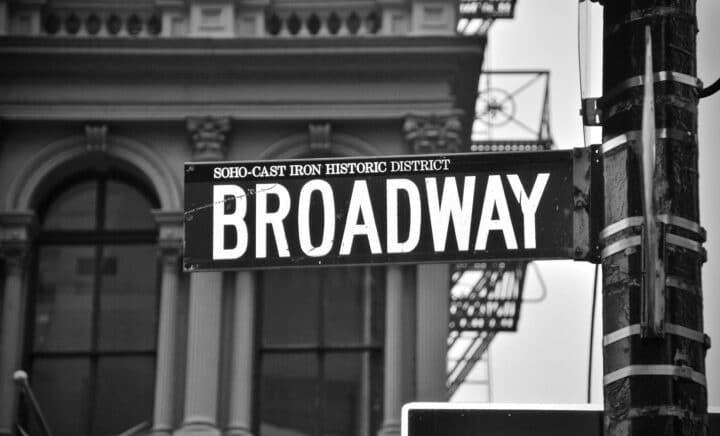Story Overview of Rigoletto
Rigoletto, composed by Giuseppe Verdi, is a tragic opera that revolves around the themes of power, revenge, and the consequences of moral corruption. Set in a fictional version of Renaissance Italy, the story is divided into three acts. Here’s all you need to know about Rigoletto shows in NYC:
Act 1
The opera opens with a lavish party at the Duke of Mantua’s palace. The Duke, a notorious womanizer, sings about his lack of commitment to any one woman in the famous aria “Questa o quella.” Rigoletto, the Duke’s court jester, mocks the courtiers and the husbands of the women the Duke has seduced. This draws the ire of Count Monterone, whose daughter has been dishonored by the Duke. Monterone curses the Duke and Rigoletto, setting the tone for the tragedy that is about to unfold.
Rigoletto, although outwardly cruel, is inwardly tormented by the curse. He leads a double life, concealing his beautiful daughter, Gilda, from the world to protect her from the Duke’s predatory ways. Gilda, however, is unaware of her father’s role as the Duke’s jester and believes him to be a humble man. She secretly falls in love with the Duke, who disguises himself as a poor student named Gualtier Maldè to win her affection.
In a dark twist, the courtiers, seeking revenge on Rigoletto for his mockery, abduct Gilda and deliver her to the Duke, thinking she is Rigoletto’s mistress. When Rigoletto realizes what has happened, his despair is profound, but he resolves to seek vengeance.
Act 2
The Duke, unaware of Gilda’s true identity, boasts of his conquest in the aria “La donna è mobile,” a piece that has become one of the most recognizable tunes in opera. Meanwhile, Rigoletto arrives at the Duke’s palace, pretending to be unconcerned about Gilda’s disappearance. He is heartbroken to find his daughter in the palace and begs the courtiers to return her to him. In a touching father-daughter duet, “Tutte le feste al tempio,” Gilda confesses her love for the Duke and her shame at having been dishonored.
Rigoletto swears vengeance on the Duke and hires the assassin Sparafucile to kill him. However, Gilda, still in love with the Duke, overhears the plot and decides to sacrifice herself to save him.
Act 3
In the final act, Rigoletto and Gilda watch as the Duke, disguised as a commoner, flirts with Sparafucile’s sister, Maddalena. Gilda is devastated to see the Duke’s infidelity, but her love remains steadfast. Rigoletto instructs Gilda to disguise herself and leave the city, but she secretly returns to the inn where the Duke is staying.
Sparafucile plans to kill the Duke and put his body in a sack for Rigoletto to dispose of. However, Maddalena, charmed by the Duke, begs Sparafucile to spare him. Sparafucile agrees to kill the next person who enters the inn instead. Gilda, hearing this, sacrifices herself and is stabbed by Sparafucile.
Rigoletto arrives to collect what he believes is the Duke’s body, only to discover that it is his dying daughter. As Gilda dies in his arms, Rigoletto realizes that Monterone’s curse has come to fruition, and he is left to mourn his tragic loss.
Cast Information
Original Cast
Rigoletto premiered at La Fenice in Venice in 1851, with Felice Varesi in the title role. Raffaele Mirate first played the role of the Duke of Mantua, and Teresa Brambilla was the first to perform as Gilda. Verdi specifically composed the roles with these performers in mind, ensuring that their vocal abilities would highlight the emotional depth of the characters.
Current Cast
In New York City, Rigoletto has been a staple of the Metropolitan Opera’s repertoire. Over the years, many distinguished artists have taken on the challenging roles in this opera. Notable recent performances include Quinn Kelsey as Rigoletto, whose portrayal has been praised for its emotional intensity and powerful vocal delivery. Rosa Feola has captivated audiences with her portrayal of Gilda, bringing a fresh interpretation to the role with her clear and agile soprano voice. Piotr Beczała, who has frequently taken on the role of the Duke, is known for his charismatic stage presence and his rendition of “La donna è mobile,” which remains a highlight of the performance.
Venue Details
Rigoletto is traditionally performed at the Metropolitan Opera House, located in the Lincoln Center for the Performing Arts in New York City. The Met, as it is commonly known, is one of the world’s leading opera houses, renowned for its grand productions and stellar casts. The opera house itself is a stunning architectural marvel, offering excellent acoustics and seating arrangements that ensure every audience member has a good view of the stage.
The venue also boasts several amenities, including bars and lounges where you can enjoy a drink before the performance or during intermission. The atmosphere of the Met, with its rich history and cultural significance, adds to the overall experience of watching a performance of Rigoletto.
Reviews and Music
Critical Reception
Critics have lauded Rigoletto for its compelling narrative and Verdi’s masterful composition. The Metropolitan Opera’s productions have generally received positive reviews, with particular praise for the vocal performances and the dramatic staging. The emotional depth of the characters, especially Rigoletto and Gilda, is often highlighted as one of the opera’s strengths.
The music of Rigoletto is both beautiful and haunting, with several arias that have become iconic in the world of opera. The Duke’s “La donna è mobile” is perhaps the most famous, known for its catchy melody and the contrast it presents to the darker themes of the opera. Gilda’s aria “Caro nome,” in which she expresses her innocent love for the Duke, is another standout, showcasing the soprano’s vocal agility and emotional range.
The quartet “Bella figlia dell’amore” is a brilliant example of Verdi’s ability to intertwine multiple vocal lines, creating a rich tapestry of sound that conveys the complex emotions of the characters. Each of these musical numbers contributes to the enduring popularity of Rigoletto among audiences.
Popular Songs Among the Audience
Among the audience, “La donna è mobile” remains a favorite, often leaving listeners humming its tune long after the performance ends. “Caro nome” is cherished for its tender expression of Gilda’s love, and the “Bella figlia dell’amore” quartet is admired for its intricate vocal interplay and dramatic tension. These pieces are consistently met with enthusiastic applause and are key highlights of the opera.
Awards
Rigoletto has not only been celebrated by audiences but has also received numerous accolades over the years. The Metropolitan Opera’s productions of Rigoletto have been nominated for and won several awards, including recognition for Best Opera Production. The singers who have taken on the lead roles, such as Rigoletto and Gilda, have also been honored for their outstanding performances, with awards recognizing their vocal excellence and contributions to the arts.
The production design, direction, and overall execution of Rigoletto have consistently earned praise, further cementing its status as a timeless masterpiece in the opera world.
Run Length and Schedule
Rigoletto typically runs for about three hours, including two intermissions. The performance schedule at the Metropolitan Opera varies depending on the season, but the opera is usually staged multiple times over several months. Evening performances generally begin at 7:30 PM, with occasional matinees on weekends starting at 1:00 PM.
The show is no longer running, however.
Food and Beverage Options
The Metropolitan Opera House offers a range of food and beverage options to enhance your theater experience. Inside the venue, you’ll find several bars and lounges where you can enjoy a selection of wines, cocktails, and light snacks before the performance and during intermission. The Grand Tier Restaurant, located within the opera house, offers a more formal dining experience, with a menu that features contemporary American cuisine.
For those looking to dine before or after the show, the Lincoln Center area boasts a variety of restaurants to suit every taste and budget. From fine dining establishments to casual cafes, there are plenty of options within walking distance of the Met. Some popular choices include The Smith, a brasserie-style restaurant known for its comfort food, and Cafe Fiorello, which serves Italian dishes and is a favorite among opera-goers.



